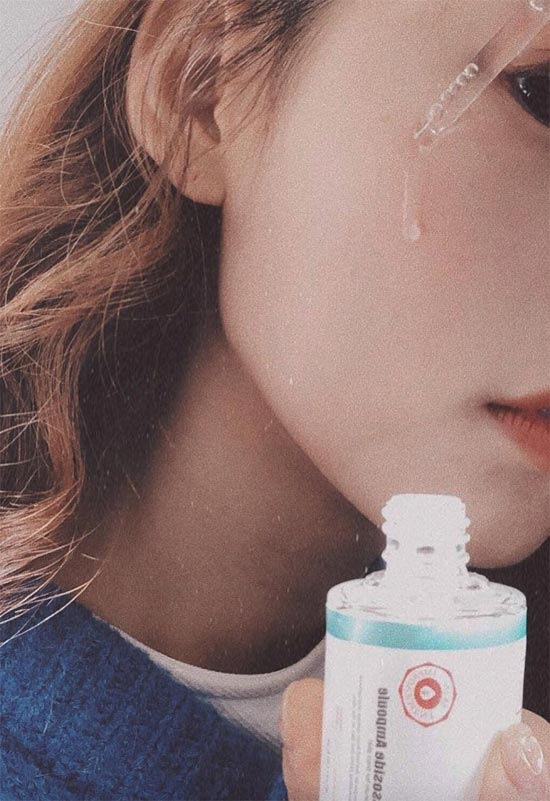If you’re the kind of person who reads skincare articles, you’ve probably heard a bit about Korean skin care or K-beauty as it is often referred to. Maybe you already have some K-beauty products sitting on your shelf, or perhaps you’ve adopted a multi-step routine inspired by the Korean skincare routine. K-beauty has definitely caught on in the West, to the point now where it’s clearly not a trend but a worthwhile skincare philosophy.
There are still some persistent myths floating around – ideas about bizarre ingredients or 15-step routines, but the truth is that the Korean skincare routine is extremely adaptable and compatible with other skincare traditions. It is driven by a combination of science, holistic medicine, and a sense of fun, and as a whole it is based on the premise that skin care should be gentle and nurturing no matter the skin type.
Below, we’ll explain what K-beauty is really all about and talk about where the trend (if we can even call it a trend) came from. We’ll go product by product to explain what the particular steps of the Korean skincare routine are and help you figure out how to apply them to your own skin in the morning and at night. We’ll also explain how to choose Korean skincare products based on your particular skin type and give some safety suggestions to help you avoid irritation and breakouts.
In this article:
- What Is K-Beauty?
- How Did the Korean Beauty Trend Emerge?
- What Are the Most Famous Korean Skincare Products?
- Your Ultimate Morning Korean Skincare Routine
- Your Ultimate Evening Korean Skincare Routine
- How Do I Put Together a K-Beauty Routine Based on My Skin Type?
- How to Introduce Korean Skincare Products to Your Skin?
What Is K-Beauty and Why Is It So Popular?
K-beauty refers to skin care from South Korea. The perceived focus of a Korean skincare routine is on gently babying the skin with skin-restoring, hydrating, and protecting ingredients, no matter the skin type. It comes from an understanding that the skin is a barrier that is meant to be nurtured, even for oilier skin types.
The purpose of a Korean skincare routine is to support the skin and maintain its health in the long term, because the underlying belief is that skin that is healthy overall will function better. This is why K-beauty products are usually going to be lower on resurfacing active ingredients like retinol or glycolic acid.
While these ingredients do show up sometimes, it’s usually at lower quantities than you will see in Western skin care, along with weaker alternatives. This is because the goal of the K-beauty routine is to slowly improve the condition of the skin without ever irritating or compromising it. While we love those strong actives on this blog, there is a reason why we always remind you to be careful with them.
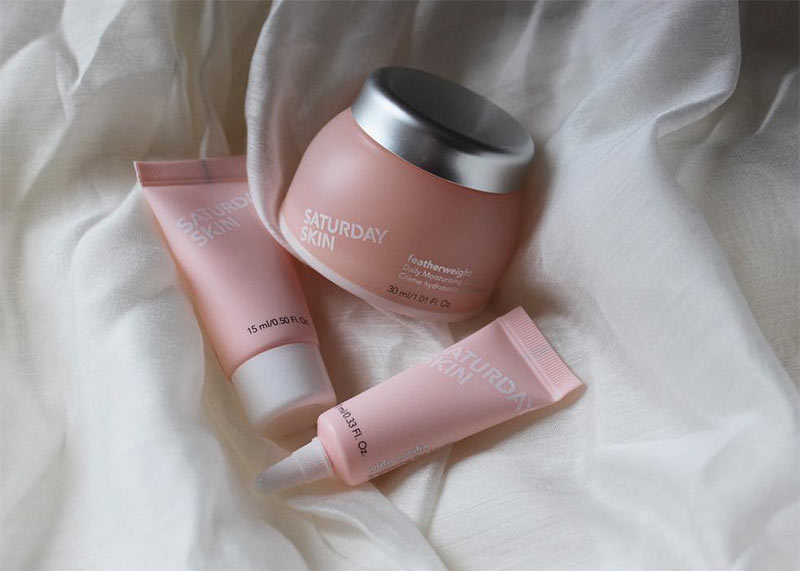
K-Beauty Characteristics
One of the main principles of the Korean skincare routine is multiple steps. I’ll go into that in extreme detail, but the low-down is this: once the skin is cleansed, products of various textures are applied to the skin in well thought-out steps, in order to give intense and thorough hydration as well as in order to infuse the skin with different nutrients one at a time.
Products are applied to the skin in order from the thinnest and most water-like to the thickest and most cream-like, with toners at the start, serums and essences in the middle, gels and lotions next, and lastly facial oils and creams. The customized nature of the steps allows people to adapt the Korean skincare routine to their own unique needs, and they can even change things up from day to day if they like.
The Fun Part
There is also a great sense of fun to a lot of K-beauty products! While some brands are more serious, luxurious or minimalistic, lots of brands have taken to creating products with unique colors, textures, packaging, and application methods in order to make the multi-step Korean skincare routine as enjoyable as possible!
Sheet masks adorned with animal faces, moisturizers in fruit-shaped containers, or glittery creams are just some of the ways in which the skincare routine is turned into an entertaining experience that can be done with friends or shared on social media.
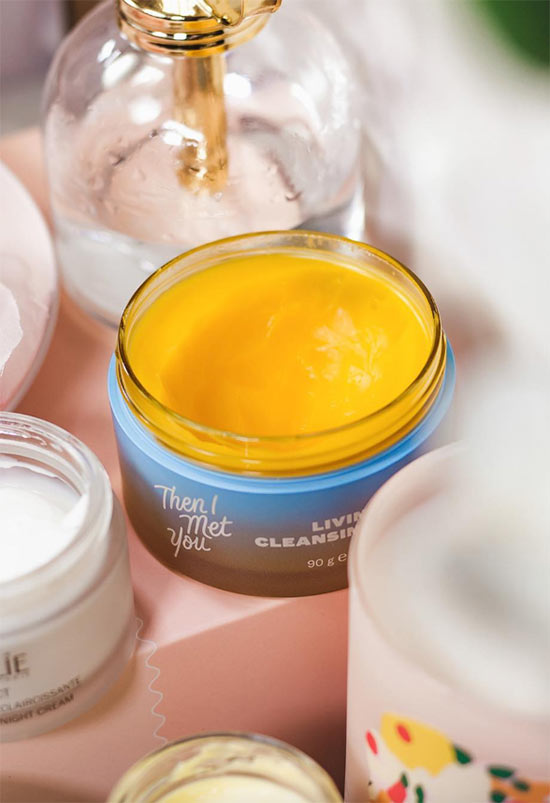
Korean Skincare Ingredients
Let’s take a moment to talk about the ingredients that do show up a lot in Korean skincare products. You will see a lot of different combinations of humectants in Korean skincare products, but fewer oils; hyaluronic acid is especially popular. The occlusives of choice are often silicones thanks to their cosmetic elegance and suitability for all skin types.
There is some deep love for natural ingredients in South Korea, with lots of herbal ingredients taken straight out of Korea’s herbal medicine tradition, which is known as “hanbang”. Hanbang ingredients include ginseng, lotus, green tea, and lots and lots of fermented extracts, which are rich in probiotics and have a soothing, barrier-strengthening effect on the skin.
There is also a love in Korea for researching and finding innovative natural ingredients, like snail excretions, propolis, and more. With that being said, K-beauty is not immune to fad ingredients – quite the opposite! Brands are always trying to innovate and to promote the next big ingredient that will shock everyone because of its efficacy and uniqueness.
Sometimes these ingredients are actually fantastic (snails, we’re looking at you!), in which case they will start showing up in products from various brands, and gain staple status, while other ingredients come and go, as consumers try them and decide not to repurchase. It’s the exact same cycle that exists elsewhere in the world.
The K-Beauty Fad
While the K-beauty routine and skincare philosophy comes from Korea, K-beauty products themselves don’t always have to. Once Korean skincare products gained popularity in the West, many new brands popped up that were inspired by the gentle, hydration-focused multi-step routine, including Peach & Lily and Glow Recipe.
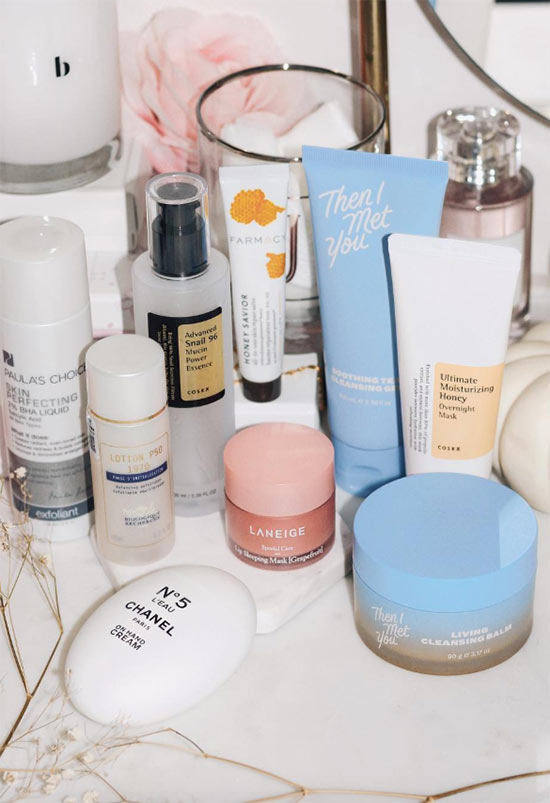
Many people have routines that combine Korean skin are products with Western ones, in a routine that is customized to their needs. For example, a lot of Asian and K-beauty gurus will mix a Western and K-beauty routine. They might use high-powered skincare actives like vitamin A or chemical exfoliants, along with gentler layered hydrating and nourishing steps.
This has led Korean skincare brands (COSRX, in particular) to craft products with ingredients that would be more popular in the West while still adhering to certain K-beauty principles.
How Did the Korean Beauty Trend Emerge?
South Korea has been home to a robust cosmetics industry for decades, with products and traditions that are nothing new to the people living in East Asia. In North America and Europe, however, K-beauty took off sometime in the mid-2010s, and radically changed the way skin care was viewed.
In 2015, in particular, Korean beauty exports to the US grew significantly, and those numbers are only rising as major retailers like Sephora increase their portfolio of Korean skincare products from year to year.
The first K-beauty product to have a massive breakout in the West was the BB cream, a type of product that blurred the lines between makeup and skin care. The BB cream story highlighted the focus Korean women put on the health of their skin over cosmetic solutions, and it ensured that Korean skin care would have significant legitimacy in the minds of consumers.

All of the other Korean skincare innovations that soon followed were nearly guaranteed to succeed, including new product categories and some wild ingredients.
Part of the success came thanks to the idea that Asian skincare science was way ahead of American and European skincare science – 12 years ahead, according to publications like Marie Claire. I remember hearing such ideas pop up in the beauty industry as early as 2009, and nowadays the suggestion that the Korean beauty market is the fastest to innovate is accepted by just about everyone.
According to Jude Chao, the amazing mind behind the blog Fifty Shades of Snail, a key part of the rise in Korean skincare has quite a lot to do with the support of the Korean government. You can find government representatives at cosmetics trade shows like Cosmoprof, supporting the PR of Korean brands in a way that other governments do not.
The Korean government also invests in skin care and beauty R&D, something that is totally unheard of elsewhere in the world. This support, coinciding with the rising popularity of K-pop (Korean pop music) and K-dramas (Korean TV series) in the West has made it easy for Korean skincare products to really catch on outside of East Asia.
Beauty bloggers and social media influencers have made it a point to feature K-beauty products on their blogs, YouTube channels, and Instagram profiles, and these days there are many forums and communities dedicated to discussing Asian beauty in general and K-beauty in particular all over the Internet.
What Are the Most Famous Korean Skincare Products to Try?
So if you have decided to try the Korean skincare routine, which products should you consider getting? Here you have all the most popular ones!
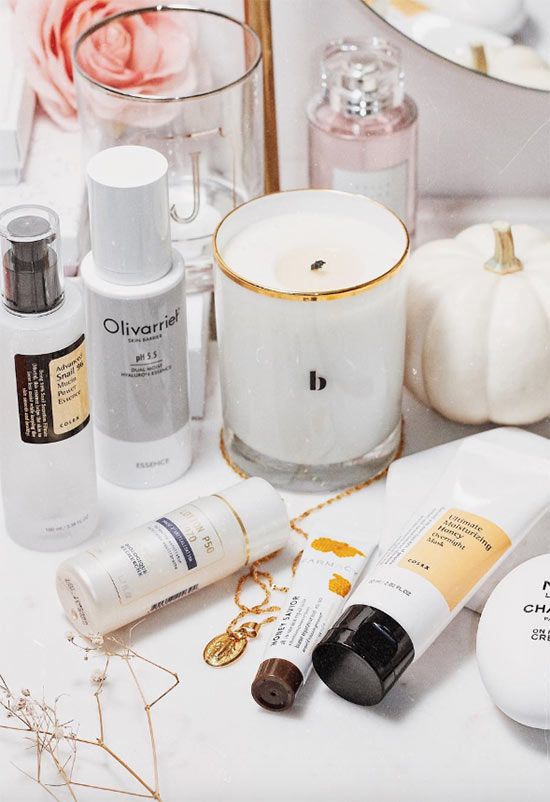
Oil and Balm Cleansers
While oil cleansing in and of itself did not originate in South Korea (it was actually popularized by Japanese beauty brands, although cleansing the skin with oil is an age-old tradition all over the world), these days double cleansing with an oil or balm cleanser is a big part of the Korean skincare routine, which favors gentle, multiple steps.
The beautiful thing about Asian cleansers is that while they rely on oils to break down and remove makeup, they still contain some detergents so they can be rinsed away with water. In true K-beauty fashion, they are usually followed up with a gentle foaming cleanser that has a low pH.
Foaming/ Water-Based Cleansers
After cleansing with an oil-based cleanser, the logic of the Korean skincare routine dictates that the next step should be to remove the residues of that first cleanser along with other, more-persistent impurities. Using two cleansers ensures that the skin is thoroughly cleaned and ready to absorb the long list of leave-on products that follow.
A gel, foam, or mousse cleanser should fit into a few criteria before it’s appropriate to use. It should be gentle on the skin and non-stripping, it should be free of harsh sulfates like sodium laureth sulfate and sodium lauryl sulfate, and it should have a pH at 5.6 or below. As a result of these requirements, Korean cleansers do not produce a lot of foam.
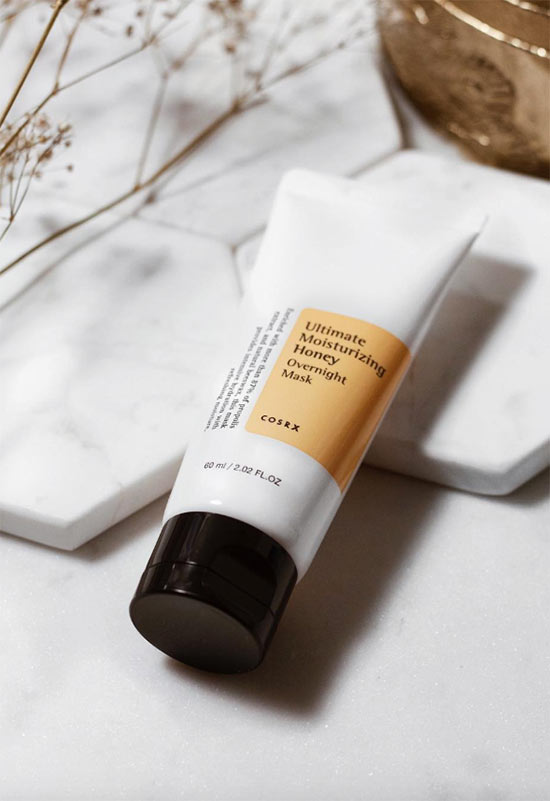
Gentle Toners
Toning is absolutely a part of a K-beauty routine, with Korean toners being a key part of why Western toners have changed so much in recent years. For the longest time, a Western toner was highly astringent with a lot of alcohol.
Korean toners, on the other hand, are meant to be gentle, hydrating liquids that are applied after cleansing with the purpose of very lightly enriching the skin with hydration and improving the absorption of anything applied above them. They often blend into the toner category, with many products categorized as “toning essence” or “essence toner.”
In South Korea, women often stay away from chemical exfoliants, but in the West, K-beauty enthusiasts often use the toning step as a chance to imbue the skin with acid-based exfoliants. Salicylic acid in toners is especially popular with the K-beauty enthusiasts on Reddit because it provides a very gentle exfoliation and is great for both acne-prone skin and sensitive skin.
Many toners will also include niacinamide, an antioxidant with skin-brightening effects, willow bark extract, which has soothing effects, as well as humectants like glycerin or hyaluronic acid.
Essences
An essence is either a thin serum or a thick toner. K-beauty products are primarily categorized based on their texture, which also relates to when they should be applied in the routine, with essences having a thick liquid texture that is ideal for applying after toning and before applying any other treatments.
They are often similar to toners, with many humectant ingredients and nutrient-rich extracts that are meant to strengthen, hydrate, and restore the skin. Essences usually do not contain high-powered actives or oils, so they tend to work for all skin types. To learn more about essences, and to see which ones we recommend, definitely read our dedicated article!
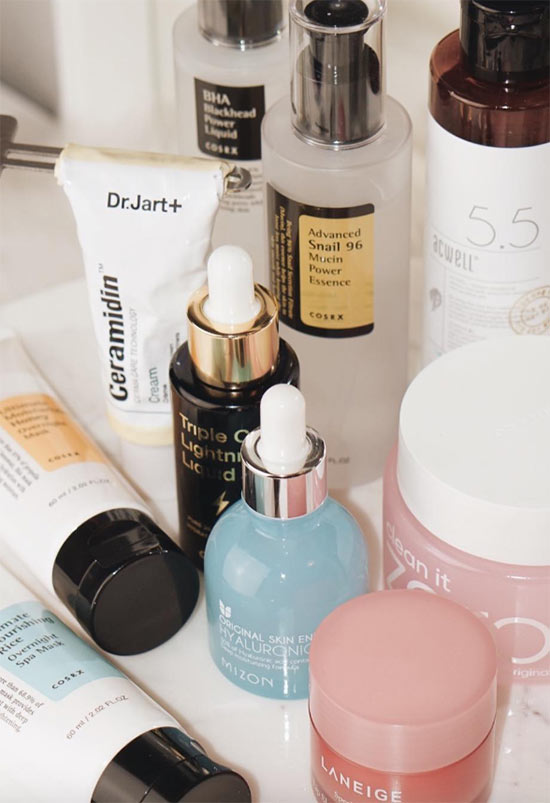
Ampoules and Serums
Serums in K-beauty are not much different from typical Western serums when it comes to texture and function. They have a thicker texture than essences that might also be little greasier, even if the serum is oil-free.
The types of ingredients that will show up in Korean serums are not particularly different than the ones that will show up in essences – you can expect soothing, hydrating formulas with lots of humectants, ferments, and antioxidants.
Ampoules stand out in the K-beauty world because they veer a little away from the traditional Korean skincare philosophy of avoiding highly active ingredients. Ampoules are highly concentrated serums that are meant to target specific skin concerns like fine lines, hyperpigmentation, loss of tone, or redness.
Sometimes you’ll see products dubbed as “boosters”, which is basically a synonym to ampoule. Ampoules will contain less water and fewer humectants, with the focus instead being on the active ingredients, which might be more familiar like peptides or vitamin C, or they might be high powered ferments or herbal extracts.
Propolis, snail mucin, and centella asiatica extract are a few of the more unique ingredients that often show up in K-beauty ampoules.
Face Oils
Face oils are certainly not unique to K-beauty – in fact, they are considered more of a “green beauty” product, though that being said, green beauty is a big part of the Korean skincare industry. Because of their unique texture and robust yet non-irritating skin benefits, face oils have become a popular part of the Korean skincare routine, especially for those who have dry skin.

The oils most popular in K-beauty are rosehip seed oil, camellia oil, soybean oil, and sunflower seed oil. Korean face oils tend to have lighter textures and non-comedogenic ingredients, and they are usually applied to the skin after essences, serums, or gel-based lotions, but before creamier moisturizers.
Gel Moisturizers
Gel-based lotions make for the most popular moisturizers in K-beauty, especially for those who have combination or oily skin. Instead of being white and creamy, they are transparent and have a bouncy jelly texture.
Their ingredients are similar to those that show up in an essence, meaning lots of water, humectants and antioxidants or plant extracts, but they will also contain a bit of silicone in order to ensure that they occlude the skin. The silicones create a sealing effect that prevents water from evaporating, so it keeps the skin hydrated for longer.
The gel texture ensures that these moisturizers will feel light and non-greasy, but still extremely hydrating. Those with oily skin will often use them as a final skincare step, especially at night, while those with dry skin might layer a facial oil, a balm or a cream on top of them.
Sheet Masks
Sheet masks are probably the coolest Korean skincare products – they are effective, enjoyable, and they make you feel really really special. They are usually made of disposable sheets made of plant fiber or cellulose that are cut to fit the face. The sheets are soaked with an essence and then sealed in a package, usually for single use although some brands also pack a few sheet masks together.
Sheet masks can come with all kinds of ingredients and different purposes – they can be hydrating, soothing, acne-fighting, brightening, all of the above, and more! In true to K-beauty philosophy, sheet masks are meant to be customized. One day you might feel like you need a more hydrating formula, while on a different day you might want an antioxidant boost.
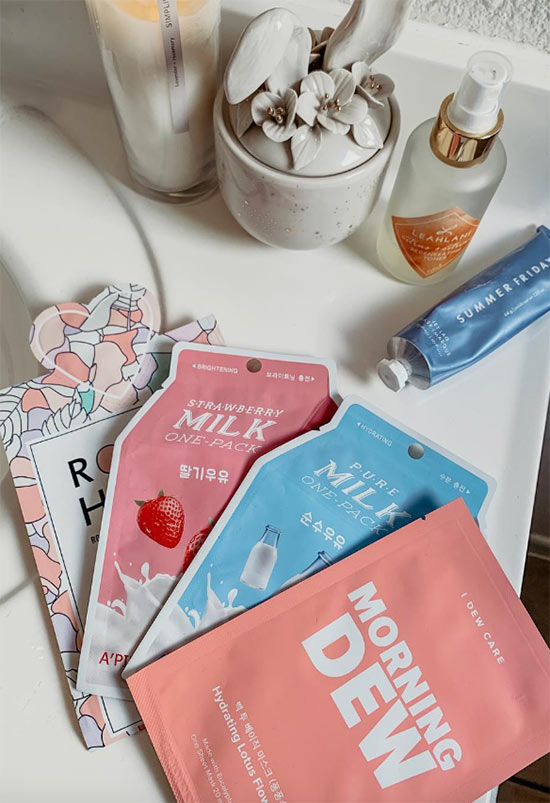
They can be used every day or just once or twice a week as a pick-me-up. It’s not rare to see K-beauty aficionados using them on airplanes to counter the dryness of the recycled air!
Sheet masks come in all kinds of shapes, some intended for smaller areas, while others are made to cover the whole face. They sometimes also come embossed with animal or superhero faces to make the experience more fun and amusing.
A sheet mask is normally applied to the skin after cleansing and toning (maybe even after you’ve applied essences and serums) and it can sit on the skin anywhere from 20 minutes to a couple of hours. Once you remove it, you pat whatever essence is left into the skin, and then finish off your Korean skincare routine – no rinsing is required.
Overnight Masks and Packs
Overnight masks or sleeping packs are K-beauty products that are really having a moment right now, and for a good reason. They are very similar to gel-moisturizers, but they are often slightly more occlusive.
These masks are normally very rich in humectants and antioxidant extracts, and their purpose is to be applied to the skin in the evening, so they can be absorbed throughout the night. They have a very similar purpose to more traditional night creams and evening moisturizers, but they tend to be lighter in texture as is common for K-beauty products.
The main marketing claim for overnight masks is that they will make the skin look fresh, bright, and bouncy in the morning after they’ve been used, and many addicts report that this effect really does occur for them!
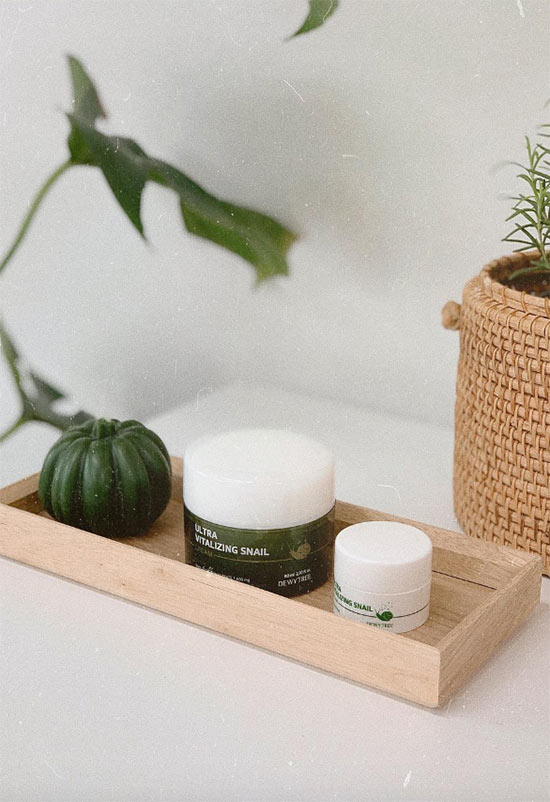
Your Ultimate Morning Korean Skincare Routine
Please note that with the exception of SPF, each step of the morning Korean skincare routine is totally optional! You might prefer to skip cleansing, or you might prefer to use an essence rather than a serum or vice versa.
It’s up to you to determine how many layers your skin needs, especially in the morning when you might not want your products to interfere with your makeup or you might just not have enough time to apply everything.
Step 1: Morning Cleanser
Cleansing in the morning is an optional step, but it’s undeniable that some cannot live without it. You can choose to use a gentle foaming cleanser or an oil cleanser that can be rinsed away. It’s totally up to you!
The key to applying the cleanser to the skin is in circular motions, using the cushioned part of the top of your palm to gently massage the skin. Some cleansers are better applied to the skin while it is dry, while others are best applied to damp skin.
Don’t spend too long massaging your skin – a few seconds are more than enough! Once you’re ready, rinse away the cleanser with water. You can use a super gentle face cloth to ensure all cleanser residue is totally gone. To dry your face from water, use a soft towel, and press it against your skin – don’t wipe!
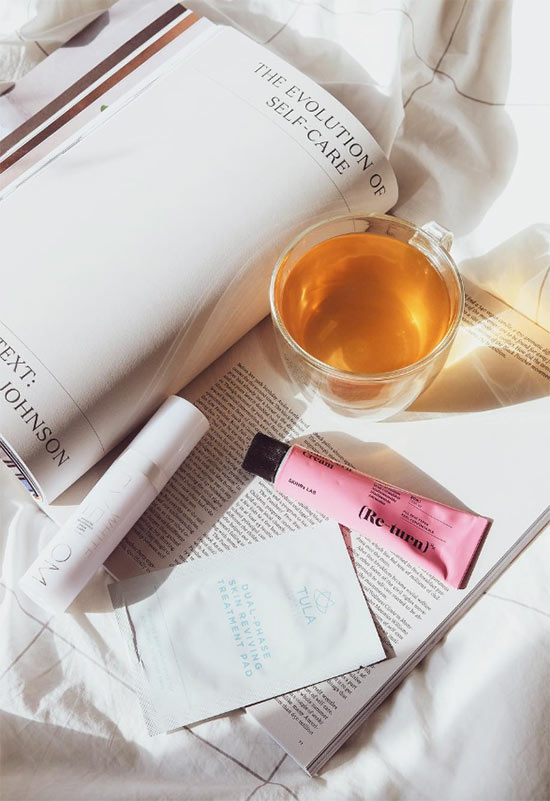
Step 2: Toner and Essence
After cleansing, it’s time to start layering on the hydrating products. Wiping and tugging are not a part of the Korean skincare routine, so you can forget about your cotton rounds – especially if you’ve already cleansed your skin with a morning cleanser.
Instead, the focus is on imbuing the skin with all the good things a toner or essence contains. Your toner or essence can be misted over the skin or splashed into the palms and then pressed in gently, using the full length of the hand.
This process can be repeated multiple times, either with the same toner or essence, or a toner can be applied first followed by an essence or two. Even within the toner and essence categories, products can vary in texture, so apply the thinner, more water-like products first, followed by thicker ones.
You can choose to use just a toner, just an essence, both, or multiples of either/ or. Most Korean toners and essences are safe and beneficial for the eye area.
If you are absolutely committed to wiping your skin with a toner, just make sure to do so gently, by saturating the cotton completely and not using too much pressure while wiping the skin.
Step 3: Serums
After you’ve used the more water-like Korean skincare products, it’s time to move on to your silky serums, which have a texture that is just slightly thicker and heavier than essences.
- Apply a dime-sized amount of serum to the palm of your hand, and then rub both of your palms together to slightly warm it up.
- Next, press the palms of your hands against your face, making sure to cover the cheeks and forehead.
- Add a bit of product to your fingers, and gently press them against the smaller contours of your face – especially the nose.
- Some K-beauty gurus recommend to slightly massage the face, maybe even using a jade roller, while others suggest to stick to the pressing motion and to avoid massaging too much. You can experiment and see what feels best on your skin.
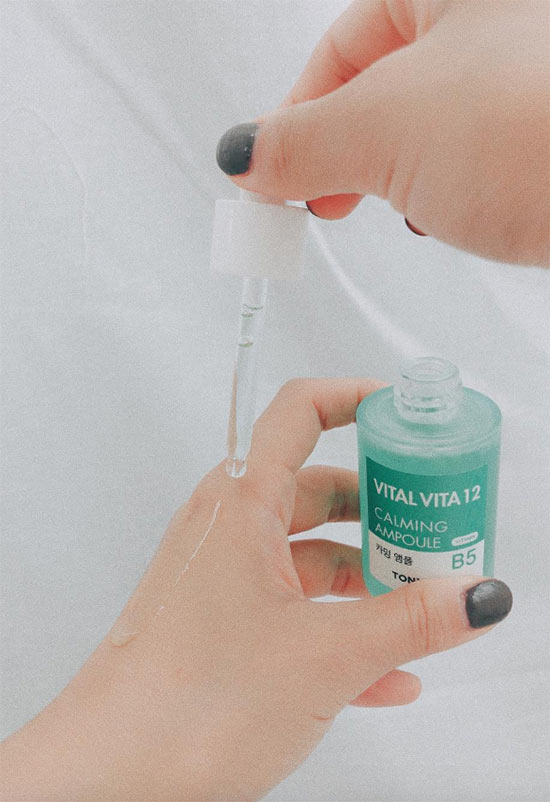
Step 4: Moisturizer
A moisturizer is definitely an optional step in the morning, especially if you have oily skin. This is because many sunscreens provide all of the occlusive and moisturizing effects that a moisturizer normally would, but with the added benefit of also protecting the skin from sun damage.
We’ll give more details about how to apply moisturizer in the nighttime routine section. If you have a moisturizer with an SPF, apply it following our instructions for sunscreen application.
Step 5: Eye Cream or Gel
Eye creams are optional for use in the daytime, but if you get puffy eyes in the mornings then you might appreciate a formula that contains skin-firming caffeine. You can even keep your eye cream or gel in the skincare fridge so it is cold when you apply it!
Apply your eye products with your ring finger, using a gentle tapping motion to press it into eye area, following the curve of the orbital bone around the eye. Avoid rubbing or tugging, as this can irritate the delicate skin.
Step 6: Sunscreen
Using sunscreen is a very important part of the Korean skincare routine, since it fits the philosophy of gentle and protective products that are meant to work in the long term to preserve the condition of the skin. It’s important to use at least a ¼ teaspoon amount, and to apply it evenly all over the face including around the eyes.
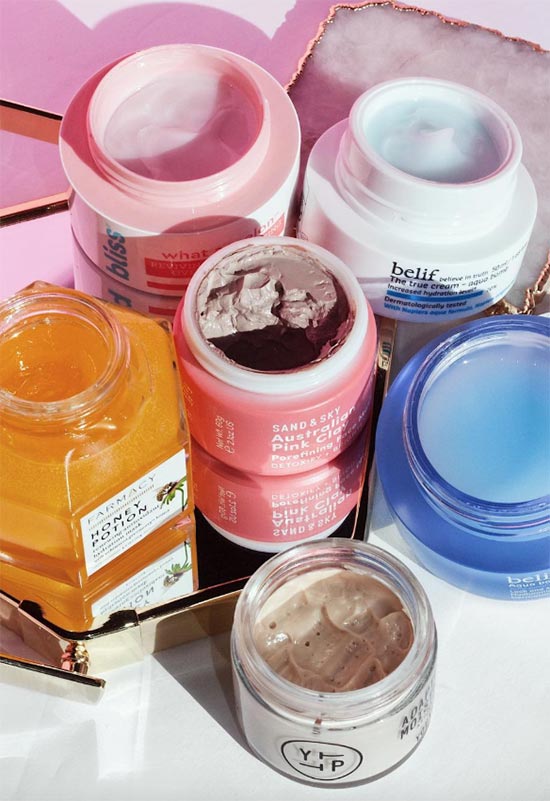
For many, a ¼ teaspoon seems like a lot of product but this is the amount required for total protection. This is where skincare layering can really help.
First dispense half the amount required, and apply it to your skin in a gentle, circular massage. Once the product has been fully absorbed into the skin, you can dispense the second half required, and apply it the same way. This will allow the sunscreen to sink into the skin thoroughly and ensure total protection.
Your Ultimate Evening Korean Skincare Routine
The evening skincare routine is extremely important, since our body (skin included) repairs itself at night while we sleep. We can give our skin a reparative boost with the multi-step Korean skincare routine which ensures that it will be clean and well nourished.
Step 1: Oil Cleanse
Oil cleansing is important at night to thoroughly remove sunscreen and makeup from daytime. Those who don’t wear makeup or heavy sunscreen might be able to skip this step, but for the rest of us it’s important.
- Apply your balm or oil cleanser to your skin while it is dry.
- Massage it in gently with the length of your fingers and cushiony part of your palm, making sure that all makeup and debris get dissolved.
- Next, splash some water on and massage some more, so that your cleanser can emulsify and turn a little milky.
- Once it has fully emulsified you can rinse everything away with water.
- You may choose to wipe your skin with a face cloth or cotton pads to ensure all oil cleanser residue is gone.
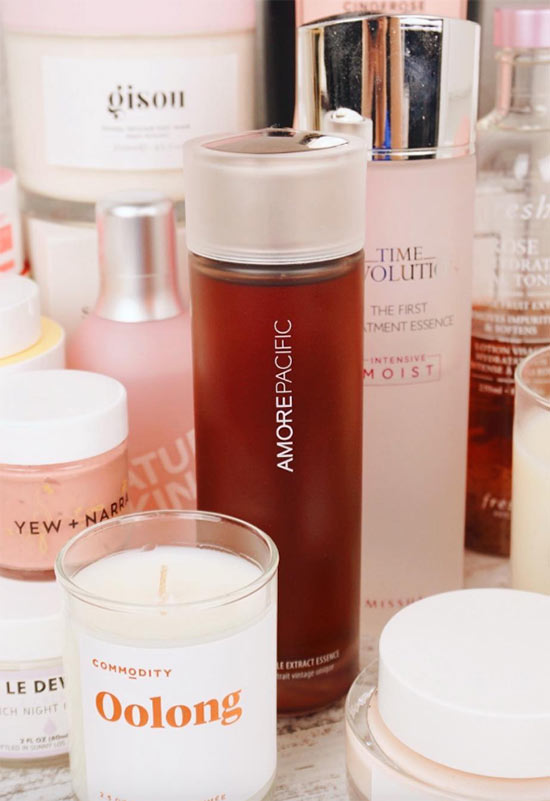
Step 2: Water Cleanse
Next, it’s time to use a gel or foam cleanser to give the skin a second, more thorough cleanse that will remove any oil cleanser residue from the skin, along with anything that may have been missed during the first cleansing step.
- Dampen your face, and then massage the second cleanser into your skin in circular, upward motions.
- Once your whole face has been covered and it’s nicely foamy, you can rinse the second cleanser away.
- Once it’s completely rinsed away, dry off your skin by pressing (never rubbing) a soft towel against your skin.
Step 3: Toner
Apply toner much the same way you would in the morning, by spritzing or splashing it on and then pressing it into the skin. If you like, you can opt for a toner with AHA or BHA, which can also double as your chemical exfoliant.
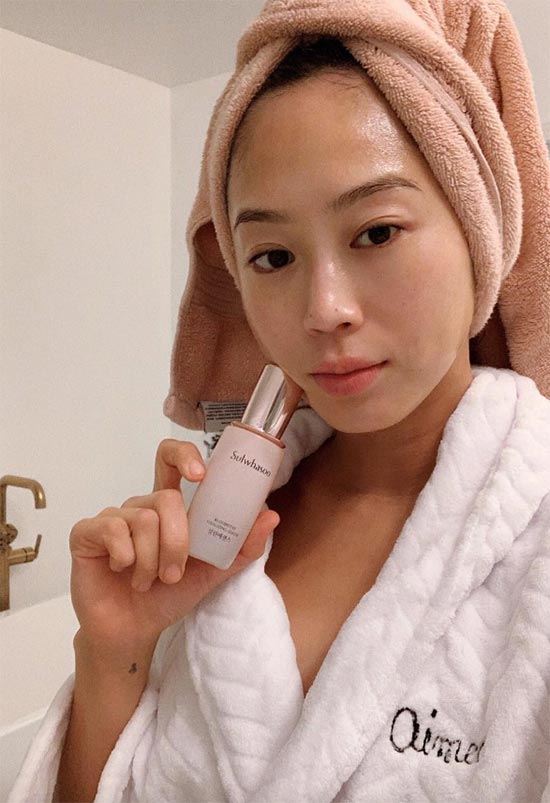
Step 4: Essence
Essence comes after toner, but should be applied in much the same way. You can re-apply the same essence multiple times if your skin is particularly dehydrated, or you can use multiple essences one after the other, starting from the thinnest to the thickest.
Step 5: Ampoule
Your evening Korean skincare routine is the perfect time to apply a super charged ampoule. Because they are so concentrated, ampoules are best applied fairly close to the beginning of a Korean skincare routine, right after a lighter essence although perhaps before a thicker or more lotiony essence.
Ampoules should be pressed into the skin much like a serum, although you may choose to only apply an ampoule to a particular part of your face where you have specific concerns.
Step 6: Sheet Masks
You don’t have to use a sheet mask every night, but if you’d like to, then there is certainly no harm. Sheet masks should be applied to the skin after cleansing and toning, but whether they’re applied after or before an essence or serum largely depends on the texture and ingredients of the mask and your serums, ampoules, and essences.
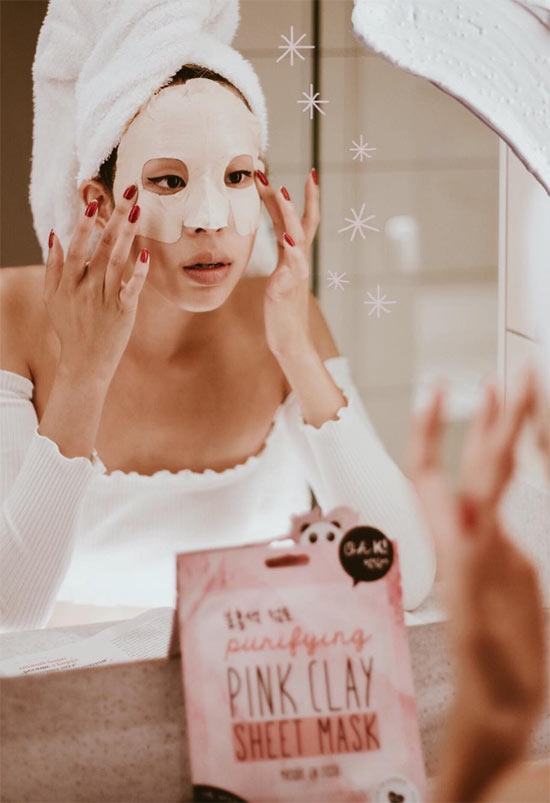
- To apply, take your sheet mask out of its packaging and unfurl it carefully.
- Start by smoothing it down over the center of your face – particularly the nose, where it can be harder to get a mask to fit.
- Then slowly pat it down over the rest of your face, smoothing it from the inner parts outwards. This will ensure that there won’t be any awkward spots on your face where the mask bubbles up and doesn’t touch your skin.
- Leave the mask on for anywhere between 20 minutes to a couple of hours. The key is that you want to remove the mask once it starts getting dry, since that’s a sign that your skin has absorbed most of the essence that is in it.
- Remove the mask by simply peeling it off, and massage into your face and neck any essence that remains in it or on your face.
Step 7: Serum
Much like you would in the morning, apply a serum by pressing it into your skin with your palm and then using your fingers to press it into the crevices of the face. Most serums will be safe to use around the eyes, as well.
If you’ve used a lot of toner or essence earlier on in the routine you will likely find that you need a very small amount of serum to cover the whole face.
Step 8: Gel Moisturizer
After a serum, it’s time for moisturizer, starting from the lightest, a gel moisturizer! If your product comes in a jar, use a small spatula or cotton swab to dispense a small amount.
Rub it between both palms of your hands, and massage it into the skin in upward motions. If your skin is feeling a little sensitive you might prefer to use the same pressing technique we recommended for applying the serum, instead.
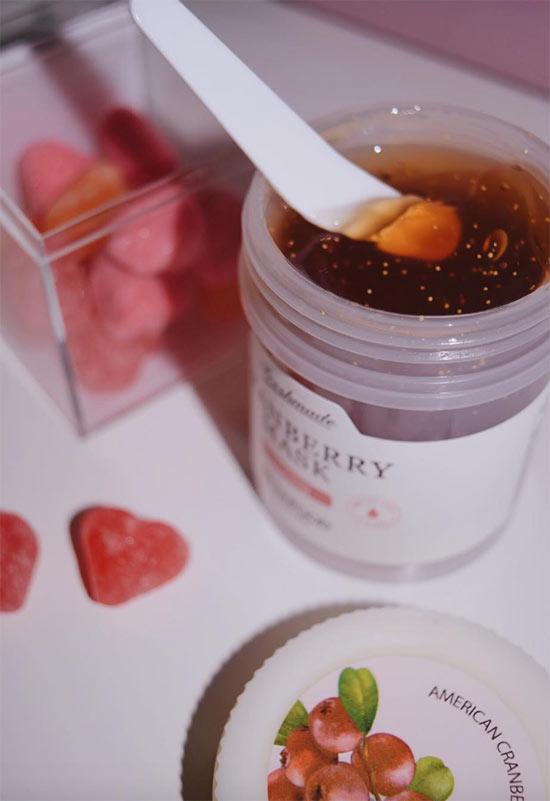
Step 9: Eye Cream or Gel
Most moisturizers and serums are safe to use around the eyes, but often the eye area requires some special attention and richer ingredients, so you might prefer a dedicated eye cream or gel. Apply your product of choice using your ring fingers, and gently press it in to the under-eye area and along the brow bone.
Step 10: Face Oil
Since Korean face oils are usually quite light, they are best applied after gel moisturizers but before creamier moisturizers. You can choose to only apply your face oil to parts of your face that are a little drier.
A pea-sized amount is more than enough to cover the whole face. Apply it in the same way as you would a moisturizer, with a gentle massage.
Step 11: Cream, Overnight Mask or Balm
The final layer of Korean skin care is meant to work as an occlusive, to seal in any of the skincare products that have been applied previously and to prevent moisture from evaporating from your skin throughout the night. This final layer can be an overnight mask, a regular moisturizer, or a waterless balm.
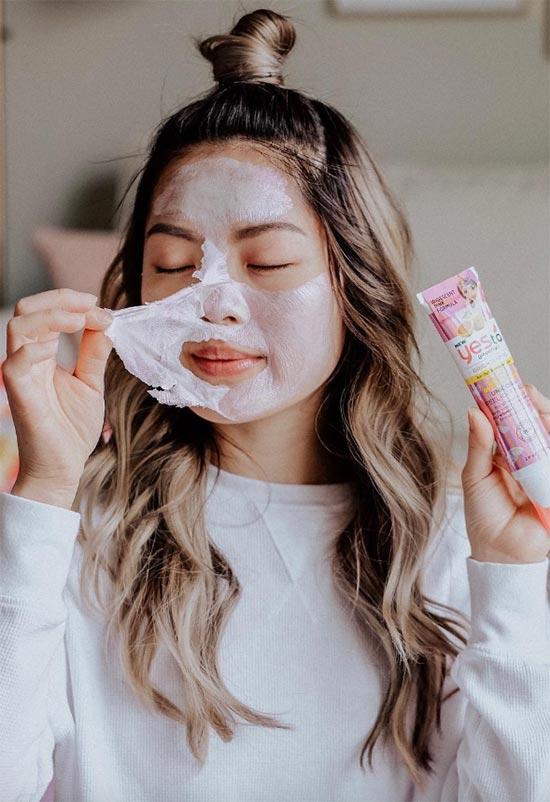
Those with oily skin can choose to skip this kind of final layer, since a gel-based moisturizer or light lotion can be enough.
Apply a pea-sized amount of that final layer to your skin with a gentle, circular massage, working from the bottom of the face upwards and from the inside outwards.
How Do I Put Together a K-Beauty Routine Based on My Skin Type?
One of the key features of Korean skincare routines is that they are super customizable. While there are many different product categories, the intention isn’t necessarily that every person use at least one product from each category.
Instead, based on your particular application preferences and skin needs you can design your own Korean skincare routine. There are no definitive rules, of course, but I will try and make it a little easier for you to figure out what you want in your K-beauty routine based on your skin type.
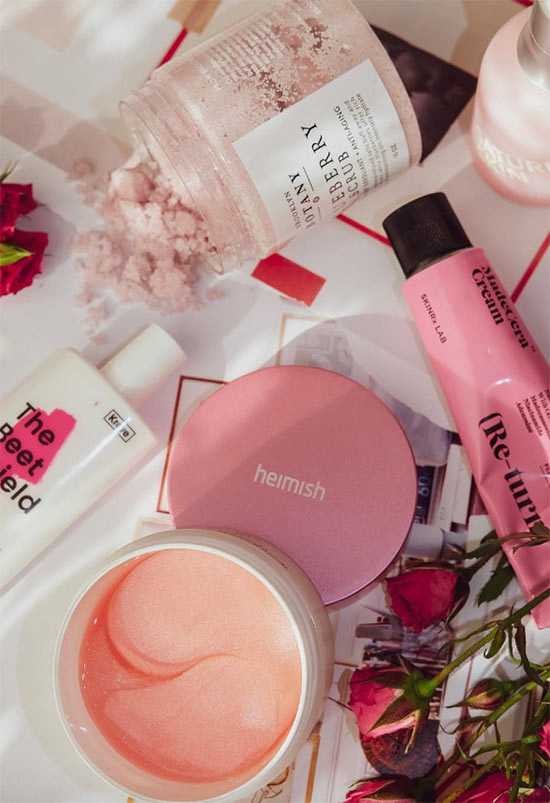
K-Beauty Routine for Oily and Acne-Prone Skin
Those with skin that produces a lot of oil throughout the day and who also tend to have larger pores often shy away from the idea of a moisture-heavy, multi-step Korean skincare routine, but the truth is that K-beauty products are really fabulous for oily and acne-prone skin.
Many K-beauty products are completely oil-free (although many oils can be okay for oily skin), and while the focus is on imbuing the skin with moisture, it’s all light, water-based moisture (since oily skin is often dehydrated). Korean skincare products rarely load the skin up with occlusives that feel heavy or greasy on the skin.
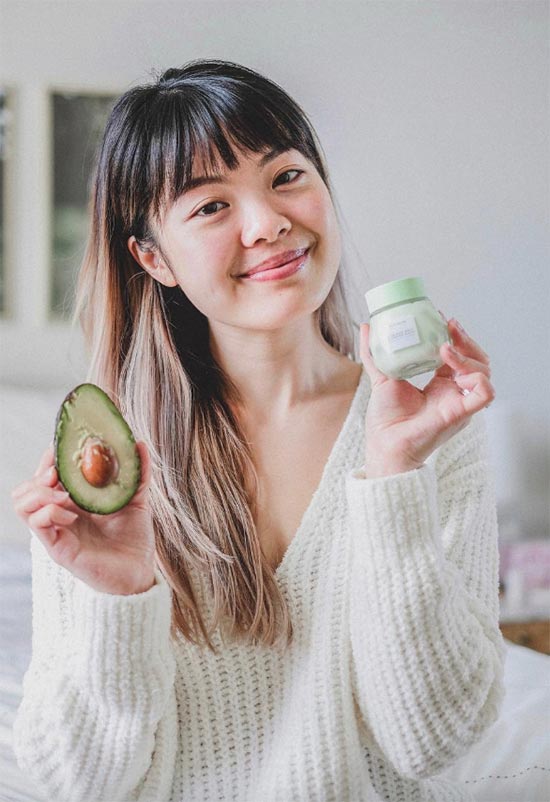
- If you have oily skin then you will definitely want to cleanse with a gentle foaming cleanser, and you can absolutely also use an oil or balm cleanser beforehand.
- Once your skin is cleansed, you might want to use some sort of actives on your skin. Many people with oily or acne-prone skin will opt for using a toner enriched with BHA or niacinamide to help eliminate breakouts and give a light exfoliation. They may also use Western acne treatments, like benzoyl peroxide or something prescribed by a dermatologist. Many people with oily skin find that prescription anti-acne treatments (both topical and oral) can severely dehydrate the skin, which is often what pushes them towards K-beauty products.
- Next come the hydration steps! If you have oily skin you might find you only need one or two hydration steps, but if your skin has gotten compromised or dehydrated due to lack of good skin care or harsh products, then you might even want to go above and beyond that. Those with oily skin usually prefer hydrating toners, essences, and gel-based moisturizers or overnight masks, and will often choose to avoid heavier serums, face oils, or creams. These lighter products sink into the skin quickly and leave it feeling plump, hydrated, and healthy yet also non-greasy.
- Using a sheet mask every once in a while can also have a nice effect on the skin. Korean sheet masks made for oily or acne-prone skin are still hydrating, but they’ll also contain skin-firming ingredients like willow bark extract for tightening the pores and tea tree oil for preventing breakouts. Those sheet masks are excellent for reducing the redness and inflammation of an active breakout!
K-Beauty Routine for Dry Skin
The Korean skincare routine is incredibly well suited to those who have dry skin, i.e. skin that produces very little oil throughout the day and tends to have smaller pores. This is because the multi-step nature of the K-beauty routine ensures that products penetrate into the skin in a very comprehensive way, with a diversity of textures that deliver optimal moisture to multiple layers of the epidermis.
- Those with dry skin can absolutely double cleanse, although some find that only using an oil cleanser on their skin actually works perfectly.
- Following cleansing up with hydrating steps is essential for loading the skin up with water. A hydrating toner or essence that contains water along with glycerin, panthenol, hyaluronic acid, butylene glycol, or other humectants is an important way to start.
- The next step would be a slightly thicker essence or serum with a similar amount of humectants, along with skin-protecting and rejuvenating antioxidants and extracts, as well as probiotic ferments that can help soothe the skin and strengthen its microbiome. These ingredients could be split across a few different products, as essences and serums can certainly be applied one after the other.
- Next would be the occlusive layers. Occlusives are ingredients like oils or silicones that create a layer over the skin, through which moisture cannot escape. Occlusive Korean skincare products tend to have a thicker texture, and they are also quite emollient so they make the skin softer and smoother to the touch. The sebum our skin produces naturally has this occlusive effect, but those who have dry skin do not produce enough sebum and require skincare products for occlusion.
- Regular creams and moisturizers can absolutely do the trick, as can heavier serums with silicones and facial oils. Facial oils can be applied first, as they have additional skin-repairing and anti-aging benefits, followed by heavier creams. Those with dry skin will likely prefer a night cream to an overnight mask.
K-Beauty Routine for Combination and Normal Skin
Those whose skin is somewhere between dry and oily, with a moderate amount of oil production or perhaps increased oil production only in some parts of the face, and medium-sized pores or pores that are varied in size will definitely benefit from the highly customizable nature of the Korean skincare routine.
- Double cleansing, of course, is excellent for all skin types, although those whose combination skin leans towards dry might prefer only to oil cleanse.
- Most people with normal and combination skin find that the humectant-heavy, hydrating essences and serums are awesome for their skin all over the face, but heavier or occlusive creams and serums may only work on the drier parts of the face.
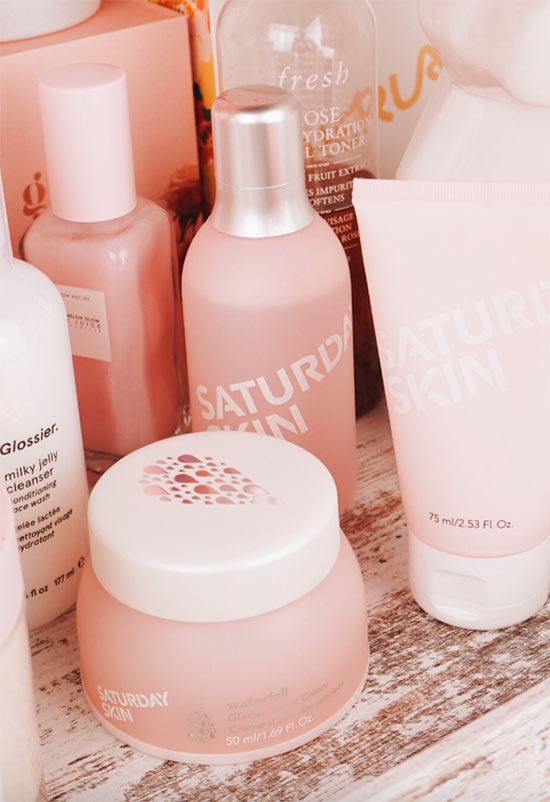
K-Beauty Routine for Maturing Skin
Women the world over look to topical skin care when it comes to staving off the signs of aging, and that includes Korean women as well. Korean skincare products are replete with anti-aging ingredients at all levels, from toners to serums to masks.
However, the anti-aging ingredients that show up in K-beauty products are just a touch different than what we’re used to in the West. Niacinamide and hyaluronic acid are popular across countries and brands, but stronger actives that are likelier to irritate the skin, like vitamin C, retinol, or glycolic acid, almost never show up in Korean skin care.
Personally, I’m a fan of stronger actives, and I think it is totally possible to incorporate them into a Korean skincare routine, but many people appreciate the gentler take on aging and are happy to avoid those pesky resurfacing agents.
Instead, anti-aging K-beauty products are rich in antioxidants that are meant to stave off the signs of aging by reducing the damage caused by free radicals (in other words, environmental damage like pollution or sun exposure). There are some familiar antioxidants like the previously mentioned niacinamide, as well as green tea extract, rosehip oil and other naturally derived ingredients, as well as some more exotic ingredients that are native to East Asia.
Licorice root extract, in particular, often shows up as a skin-brightening ingredient instead of vitamin C. Ampoules are often popular with those trying to stave off the signs of aging, since they tend to be more concentrated.
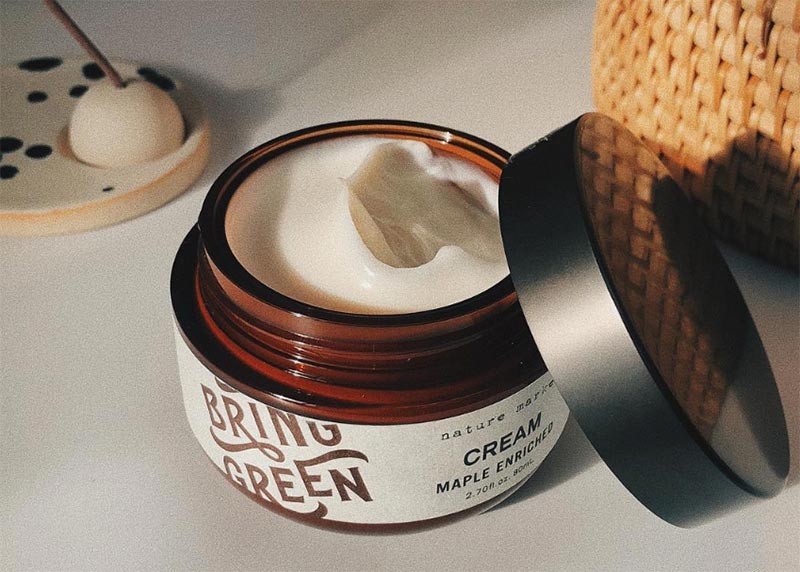
K-Beauty Routine for Sensitive Skin
Korean skin care is extremely well suited to those with sensitive skin, since products are rarely harsh or sensitizing. Instead, they are often rich in soothing ingredients that help to heal, calm, and hydrate the skin.
You won’t have to look hard to find products rich in wonderful soothers and anti-inflammatories like centella extract, green tea extract, various ferments, and willow bark extract. Sensitive skin is a condition, not a skin type, so choose steps and textures based on how oily or dry you are.
One thing to be aware of is that many K-beauty products do contain a lot of fragrance or essential oils, which some people with sensitive skin find irritating. Be careful to choose products with low or no fragrance when putting together a Korean skincare routine.
Additionally, be particularly careful not to overdo it, and read the next section to learn how to introduce new K-beauty products into your routine safely.
How to Introduce Korean Skincare Products to Your Skin?
The multi-step nature of the Korean skincare routine sometimes makes people forget the importance of introducing products into their regimen slowly, but don’t let all of these wonderful products distract you!
No matter your skincare philosophy, it is important that you never start using more than one new product at a time when building a skincare routine. Completing your full multi-step K-beauty routine might end up taking a few months as a result, but it’ll be worth it.
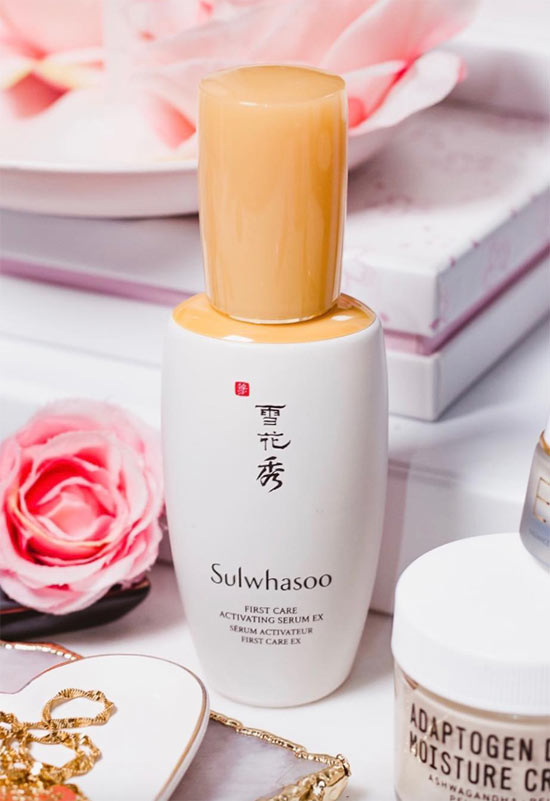
It usually takes a few days to a few weeks to find out if a product will work for you or not – this applies to everyone, but it’s especially true for those who have sensitive or acne-prone skin. If you introduce one product at a time it will be easy to see if it will work for you. If you introduce multiple Korean skincare products at once and you end up with a negative reaction, you will have absolutely no way of knowing which product caused it!
Because of this, if you are planning to switch over to a K-beauty routine, remember to go slow. Choose the first product you would like to try, and start using it as directed.
If your main concern is acne, wait a week or two to see if it breaks you out. If your concern is sensitivity, then a few days should suffice. Once you are certain that this product works for you, you can go ahead and introduce the next one in the same fashion.
Photos via @sae.byul, Instagram

